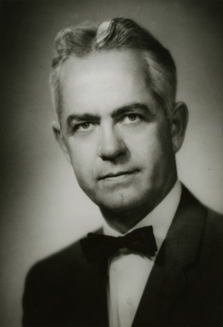The Royal Radar Establishment was a research centre in Malvern, Worcestershire in the United Kingdom. It was formed in 1953 as the Radar Research Establishment by the merger of the Air Ministry's Telecommunications Research Establishment (TRE) and the British Army's Radar Research and Development Establishment (RRDE). It was given its new name after a visit by Queen Elizabeth II in 1957. Both names were abbreviated to RRE. In 1976 the Signals Research and Development Establishment (SRDE), involved in communications research, joined the RRE to form the Royal Signals and Radar Establishment (RSRE).

Malvern Preparatory School, commonly referred to as Malvern Prep, is an independent Catholic middle school and college preparatory high school for boys located in Malvern, Pennsylvania within the Archdiocese of Philadelphia. The school was started and is still run by Order of Saint Augustine and is a member of the Augustinian Secondary Education Association. Malvern Prep is a member of the Inter-Academic League which also includes Episcopal Academy, Germantown Academy, Penn Charter, The Haverford School, and Springside Chestnut Hill Academy.
The Panofsky Prize in Experimental Particle Physics is an annual prize of the American Physical Society. It is given to recognize and encourage outstanding achievements in experimental particle physics, and is open to scientists of any nation. It was established in 1985 by friends of Wolfgang K. H. Panofsky and by the Division of Particles and Fields of the American Physical Society. Panofsky was a physics professor at Stanford University and the first director of the Stanford Linear Accelerator Center (SLAC). Several of the prize winners have subsequently won the Nobel Prize in Physics. As of 2021, the prize included a $10,000 award.

The Michael Faraday Medal and Prize is a gold medal awarded annually by the Institute of Physics in experimental physics. The award is made "for outstanding and sustained contributions to experimental physics." The medal is accompanied by a prize of £1000 and a certificate.

The Ernest Orlando Lawrence Award was established in 1959 in honor of a scientist who helped elevate American physics to the status of world leader in the field.
The James C. McGroddy Prize for New Materials is a prize that has been awarded annually by the American Physical Society since 1975, but was only given that name following its endowment by IBM in 1999. Prior to that it was known as the International Prize for New Materials. The recipients are chosen for "Outstanding achievement in the science and application of new materials". The prize is named after James C. McGroddy, himself a winner of APS's George E. Pake Prize in 1995, and comes with a cash award of $10,000.
The Hans A. Bethe Prize, is presented annually by the American Physical Society. The prize honors outstanding work in theory, experiment or observation in the areas of astrophysics, nuclear physics, nuclear astrophysics, or closely related fields. The prize consists of $10,000 and a certificate citing the contributions made by the recipient.

Tom Wilkerson Bonner was an American experimental physicist who developed important instruments and techniques for neutron physics and nuclear physics.
Richard Geller was an experimental nuclear and plasma physicist. He was born on Monday, 25 April 1927, in Vienna and died on Sunday, 1 July 2007, at the age of 80, in Grenoble.
Ernest K. Warburton was an American experimental nuclear physicist.
Stuart Jay Freedman was a physicist, known for his graduate work on a Bell test experiment with John Clauser as well as his contributions to nuclear and particle physics, particularly weak interaction physics. He was a graduate student at UC Berkeley under Eugene Commins, where he worked with fellow graduate student Steven Chu. He was also recipient of 2007 Tom W. Bonner Prize in Nuclear Physics.
Robert Graham Hamish Robertson is a Canadian–American experimental physicist, specializing in neutrino physics. He is a Professor Emeritus at the University of Washington, where he was formerly the director of the University of Washington's Center for Experimental Nuclear Physics and Astrophysics.
Arthur M. Poskanzer was an experimental physicist, known for his pioneering work on relativistic nuclear collisions.
George F. Bertsch is an American nuclear physicist.
George Raymond "Ray" Satchler was a British-American nuclear physicist.
Peter John Twin is a British experimental nuclear physicist. He is known for his research into the structure of atomic nuclei, based upon his pioneering work on techniques of gamma ray spectroscopy and, specifically, the Total Energy Suppression Shield Array (TESSA).
Felix Hans Boehm was a Swiss-American experimental physicist, known for his research on weak interactions, parity violation, and neutrino physics.
Eric George Adelberger is an American experimental nuclear physicist and gravitational metrologist.
David William Hertzog is an American particle physicist, known for his research in precision muon physics.



